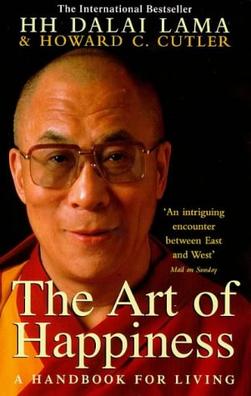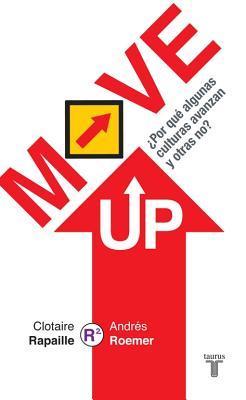Sociotechnical systems (STS) in organizational development is an approach to complex organizational work design that recognizes the interaction between people and technology in workplaces. The term also refers to coherent systems of human relations, technical objects, and cybernetic processes that inhere to large, complex infrastructures. Social society, and its constituent substructures, qualify as complex sociotechnical systems.
A technical writer is a professional communicator whose task is to convey complex information in simple terms to an audience of the general public or a very select group of readers. Technical writers research and create information through a variety of delivery media. Example types of information include online help, manuals, white papers, design specifications, project plans, and software test plans. With the rise of e-learning, technical writers are increasingly hired to develop online training material.
User-centered design (UCD) or user-driven development (UDD) is a framework of processes in which usability goals, user characteristics, environment, tasks and workflow of a product, service or process are given extensive attention at each stage of the design process. These tests are conducted with or without actual users during each stage of the process from requirements, pre-production models and post production, completing a circle of proof back to and ensuring that "development proceeds with the user as the center of focus." Such testing is necessary as it is often very difficult for the designers of a product to understand intuitively the experiences of first-time users, and what each user's learning curve may look like. User-centered design is based on the understanding of a user, their demands, priorities and experiences and when used, is known to lead to an increased product usefulness and usability as it delivers satisfaction to the user. User-centered design applies cognitive science principles to create intuitive, efficient products by understanding users' mental processes, behaviors, and needs.

The Art of Happiness is a book by the 14th Dalai Lama and Howard Cutler, a psychiatrist who posed questions to the Dalai Lama. Cutler quotes the Dalai Lama at length, providing context and describing some details of the settings in which the interviews took place, as well as adding his own reflections on issues raised.

The Scout Motto of the Scout movement is, in English, "Be Prepared", with most international branches of the group using a close translation of that phrase. These mottoes have been used by millions of Scouts around the world since 1907. Most of the member organizations of the World Association of Girl Guides and Girl Scouts (WAGGGS) share the same mottoes.

Future-proofing is the process of anticipating the future and developing methods of minimizing the effects of shocks and stresses of future events. Future-proofing is used in industries such as electronics, medical industry, industrial design, and more recently, in design for climate change. The principles of future-proofing are extracted from other industries and codified as a system for approaching an intervention in an historic building.
Theory Z is a name for various theories of human motivation built on Douglas McGregor's Theory X and Theory Y. Theories X, Y and various versions of Z have been used in human resource management, organizational behavior, organizational communication and organizational development.

In an essay, article, or book, an introduction is a beginning section which states the purpose and goals of the following writing. This is generally followed by the body and conclusion.
A mission statement is a short statement of why an organization exists, what its overall goal is, the goal of its operations: what kind of product or service it provides, its primary customers or market, and its geographical region of operation. It may include a short statement of such fundamental matters as the organization's values or philosophies, a business's main competitive advantages, or a desired future state—the "vision". Historically it is associated with Christian religious groups; indeed, for many years, a missionary was assumed to be a person on a specifically religious mission. The word "mission" dates from 1598, originally of Jesuits sending members abroad.

The Design of Everyday Things is a best-selling book by cognitive scientist and usability engineer Donald Norman. Originally published in 1988 with the title The Psychology of Everyday Things, it is often referred to by the initialisms POET and DOET. A new preface was added in 2002 and a revised and expanded edition was published in 2013.

The Power of Now: A Guide to Spiritual Enlightenment is a book by Eckhart Tolle. It is a discussion about how people interact with themselves and others. The concept of self-reflection and presence in the moment are presented along with simple exercises for the achievement of its principles. Published in the late 1990s, the book was recommended by Oprah Winfrey and has been translated into 33 languages. As of 2009, it was estimated that three million copies had been sold in North America.
Training and development involve improving the effectiveness of organizations and the individuals and teams within them. Training may be viewed as related to immediate changes in organizational effectiveness via organized instruction, while development is related to the progress of longer-term organizational and employee goals. While training and development technically have differing definitions, the two are oftentimes used interchangeably and/or together. Training and development have historically been topics within adult education and applied psychology but have within the last two decades become closely associated with human resources management, talent management, human resources development, instructional design, human factors, and knowledge management.

The Happiness Hypothesis: Finding Modern Truth in Ancient Wisdom is a 2006 book written by American social psychologist Jonathan Haidt. In it, Haidt poses several "Great Ideas" on happiness espoused by thinkers of the past—such as Plato, Buddha and Jesus—and examines them in the light of contemporary psychological research, extracting from them any lessons that still apply to our modern lives. Central to the book are the concepts of virtue, happiness, fulfillment, and meaning.

The English Gentleman (1978) is a humorous book written by Douglas Sutherland and illustrated by Timothy Jacques, with an introduction by Sir Iain Moncreiffe of that Ilk. The book acts as a satirical guide to the life of an English gentleman in various contexts, featuring such chapters as "The Gentleman at Play", "The Gentleman at War", and "The Gentleman and the Opposite Sex".
Form and Document Creation is one of the things that technical communicators do as part of creating deliverables for their companies or clients. Document design is: "the field of theory and practice aimed at creating comprehensible, persuasive and usable functional documents". These forms and documents can have many different purposes such as collecting or providing information.

Move UP is a nonfiction book written by Dr. Clotaire Rapaille and Dr. Andrés Roemer in 2013 that explains upward social mobility from a biological and cultural perspective, and how societies and nations create adequate environments for maintaining the bio-logical requirements of the human species. The book is based on the latest research in biology, evolutionary psychology, behavioral economics, neuroscience and anthropology.

The Obstacle Is the Way: The Timeless Art of Turning Trials into Triumph is the third book by author Ryan Holiday. It was published in 2014. It is a book which offers individuals a framework to flip obstacles into opportunities, an approach crafted by Holiday. It was inspired by the philosophy of stoicism.

Inventing the Future: Postcapitalism and a World Without Work is a 2015 monograph by Nick Srnicek and Alex Williams, published by Verso Books.

Robots Will Steal Your Job, but That's OK: How to Survive the Economic Collapse and Be Happy is a book by Federico Pistono that was published in 2012. Initially self-published by the author, it was later picked up by publishers internationally and translated in six languages. It became a best-seller on Amazon.com, and was covered in various publications such as the BBC, the Financial Times and Época.
Speculative design is a design practice concerned with future design proposals of a critical nature. The term was popularised by Anthony Dunne and Fiona Raby as a subsidiary of critical design. The aim is not to present commercially-driven design proposals but to design proposals that identify and debate crucial issues that might happen in the future. Speculative design is concerned with future consequences and implications of the relationship between science, technology, and humans. It problematizes this relation by proposing provocative future design scenarios where technology and design implications are accentuated. These design proposals are meant to trigger debates about the future rather than marketing products.











